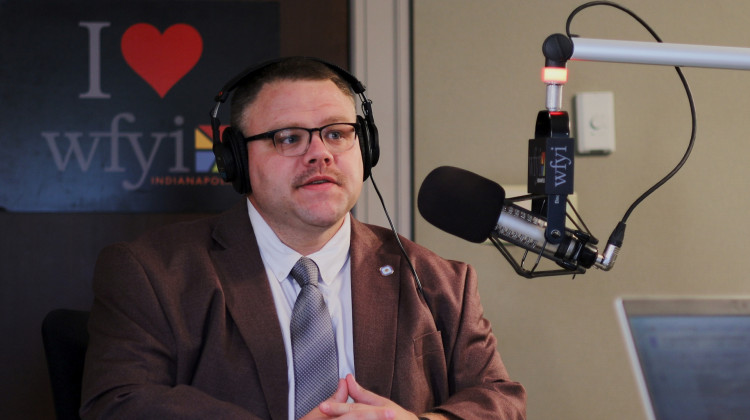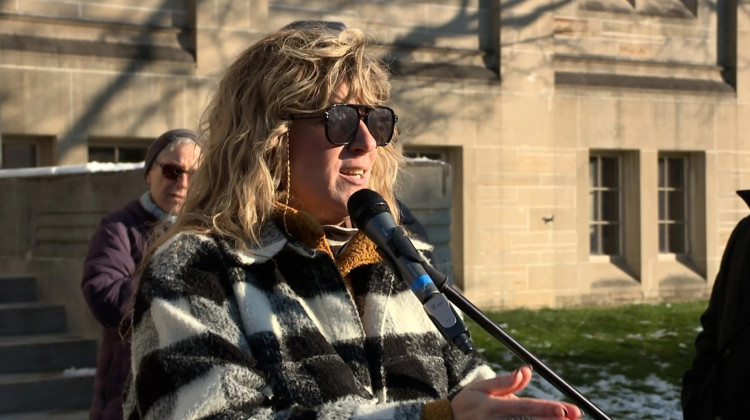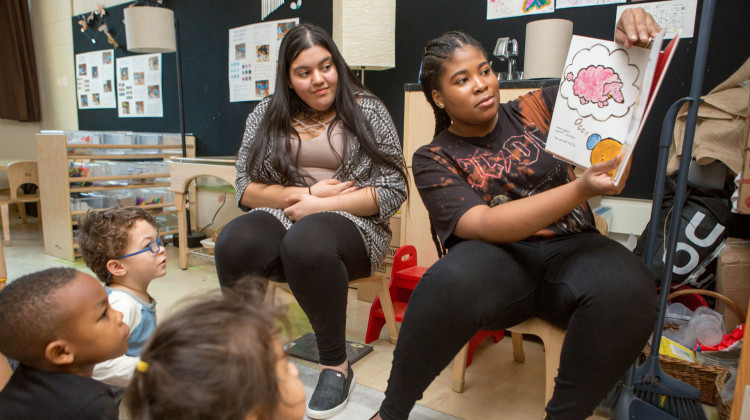
Sam Snideman with the United Way of Central Indiana in WFYI's studio on September 24, 2025.
Zach Bundy / WFYIThe average cost of daycare in Indiana is more than $8,500 a year, according to estimates from Early Learning Indiana. For many families that can be out of reach.
Low-income, working parents can get help through vouchers from the Child Care and Development Fund, or CCDF, and Indiana’s On My Way Pre-K. But the state relied on temporary federal pandemic aid to help fund those programs, and over the last year, Indiana dramatically cut both the number of vouchers and how much those vouchers pay.
Day cares are reeling from those reductions, with some decreasing teacher pay, laying off staff and closing classrooms. And parents who are unable to find affordable care have been forced to quit working or turn to makeshift child care.
WFYI’s Dylan Peers McCoy sat down with Sam Snideman, vice president of government relations for the United Way of Central Indiana, to talk about how inadequate child care affects families, businesses and communities. United Way is an influential supporter of expanding high-quality child care.
This interview has been edited for length and clarity.
Dylan Peers McCoy: Why is it important for Indiana for low-income families to have access to care and preschool?
Sam Snideman: What we learned through the pandemic is that care work is what makes work in every other sector possible. So if families lack access to child care, particularly working families, particularly low income families, that often have to balance more than one job in order to make ends meet if they don't have access to care, the other things that we have considered to be essential parts of the workforce grind to a halt. According to some research by the US Chamber of Commerce Foundation, Indiana loses about $4 billion a year in economic activity by our under investment in child care.
McCoy: Back when the pandemic started, about 40,000 Hoosier children received child care vouchers from the state, and that number jumped by four years later. Can you tell me about how Indiana paid for that expansion and what has happened to the program over the last year?
Snideman: Yeah, so Indiana financed a lot of that growth through the use of pandemic era federal assistance, as with many other parts of the economy and other parts of government services, lots of unrestricted dollars were pushed into the child care system, which allowed for the expansion of the number of vouchers. As those dollars have been spent or as those programs have been sunset by the federal government, what we have seen is a steady contraction of the number of children being served as kids aged out. A family who has had an infant born in the last year will not probably receive any sort of eligibility for several years.
McCoy: What are the effects on the state's economy?
Snideman: Yeah, well, I think that all you have to do is look at the proportion of folks who are leaving the workforce because they've had disruptions to care, and oftentimes, you know, those are women who are leaving the workforce, and they sometimes are not coming back at all. If you're running a business, and someone who's really critical to your operations has a disruption to their child care situation and has to cut their hours or walk away, that can have devastating impacts on your business's bottom line.
McCoy: Will these cuts to child care from the state undermine all the work that's been done and the money that's been spent to increase the state's capacity of high-quality child care providers?
Snideman: In some communities it will. I think that for many nonprofits and many philanthropic groups and an increasing number of for-profit businesses, they have looked at the funding of child care as really being, you know, a sort of three-legged stool — that the state has this portion, that private businesses, to a certain extent, have some responsibility, or local governments, or local philanthropic groups like United Way have a certain, you know, portion of responsibility, and that families have a certain portion of responsibility.
The overall health of the sector gets undermined when any one of those things gets pulled away. Putting more pressure on families will mean that some families will just choose not to work, because it will not be affordable. And that puts additional pressure on other parts of the system. So like I said, I'm profoundly concerned about what this means in terms of not only our state's economic health, but quite frankly, what it means for the economic opportunity and economic stability of families and kids.
McCoy: Well, thank you for coming in to join me, Sam. I really appreciate your time.
Snideman: Thank you, Dylan.
 DONATE
DONATE








 Support WFYI. We can't do it without you.
Support WFYI. We can't do it without you.